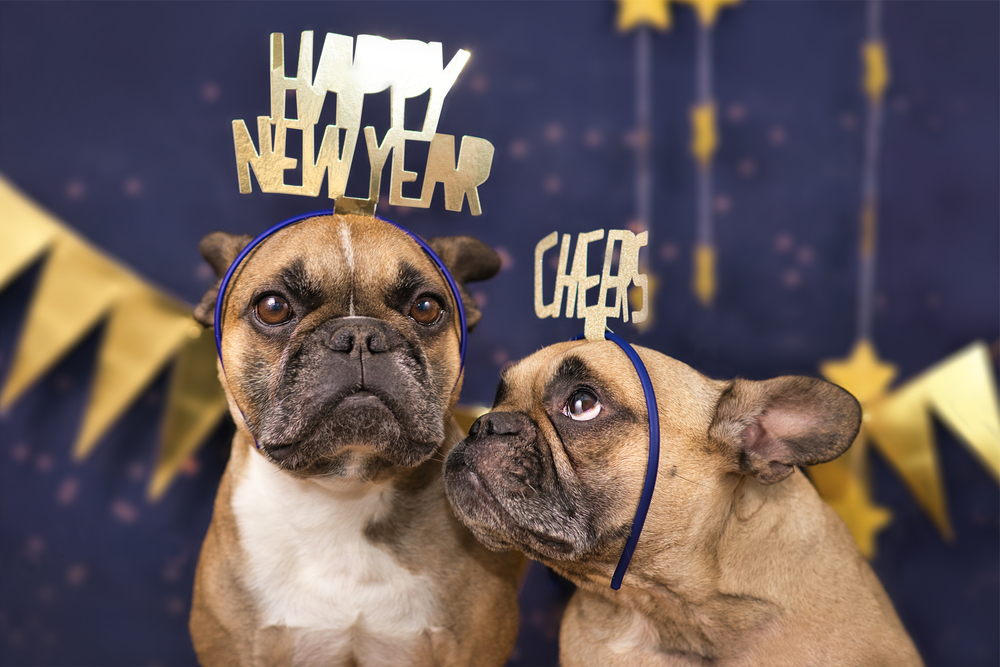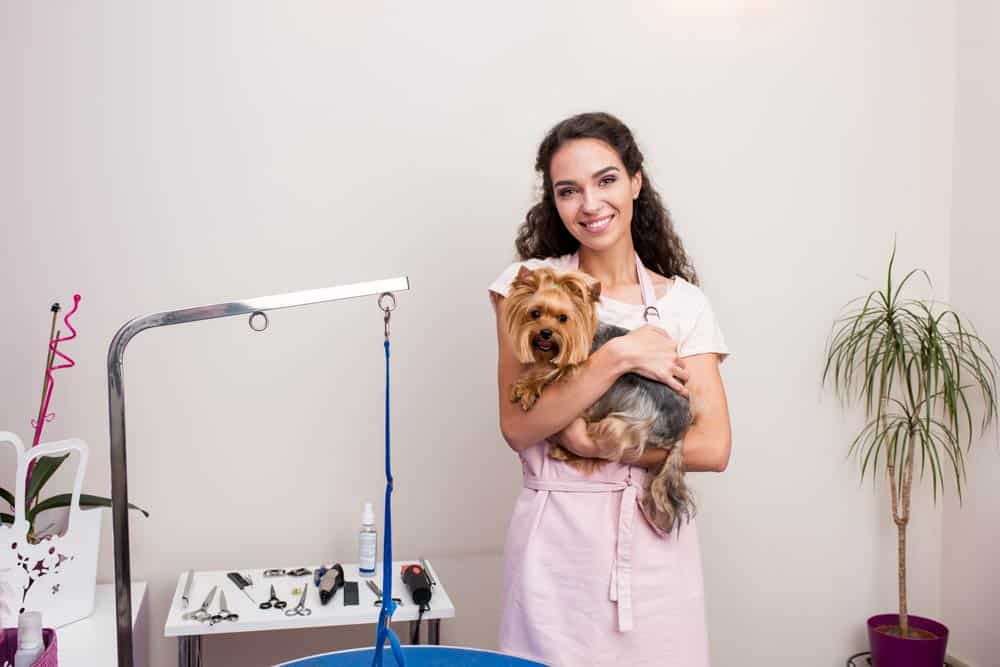While most dog groomers are familiar with classic “Best in Show” events like Westminster, dog grooming competitions are less well-known in the industry.
Classic dog shows are full of poised pups judged on their adherence to breed regulations. However, grooming competitions put a greater emphasis on criteria like balance, structure, and finish of the dog’s coat. The dog’s bone structure and profile still play a role, but the quality of the grooming is paramount.
For dog groomers who are passionate about continuing their education, these competitions are the best way to build skills and develop a community of other dog groomers who are as passionate about the dog grooming world as they are.
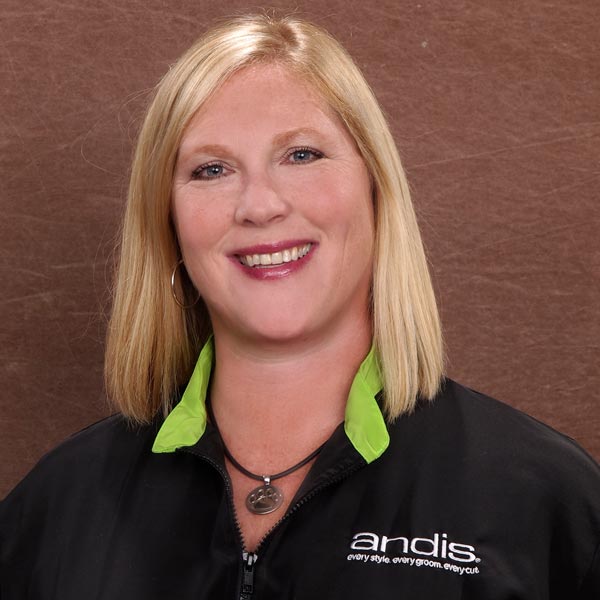
Tammy Siert holds multiple roles within the dog grooming world. She’s a Certified Master Dog Groomer, a Small Animal Education Team for Andis, grooming competition judge, and Secretary of Groom Team USA. She says, “Most groomers don’t know there are grooming competitions. They may hear about a trade show via social media. They come to a trade show for education and then see this grooming show going on on the sidelines and some of them want to know more.”
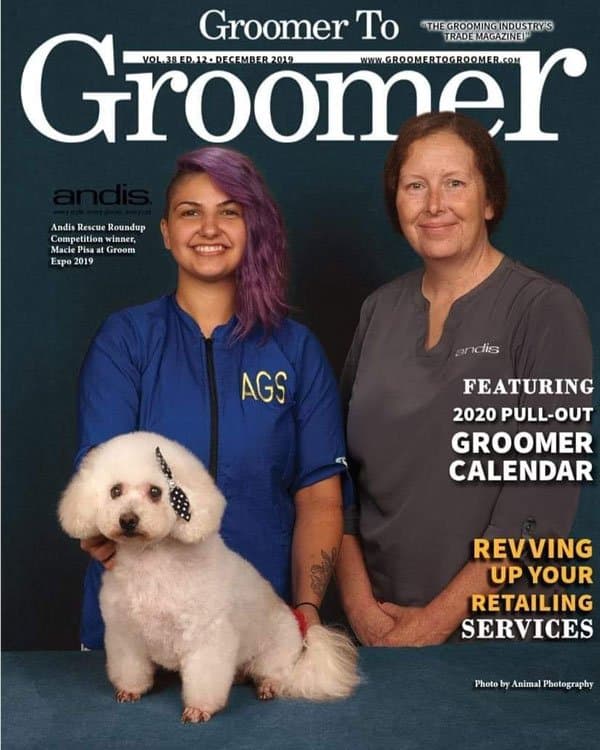
Macie Pisa of The Laundromutt in Buffalo, NY and a new member of Groom Team, USA says, “As I groomed dogs, I wanted to learn more. The easiest way to get certified is to go to shows.” Both Macie and Tammy hold leadership positions on Groom Team, USA which Tammy describes as the “Olympics of the dog grooming world. If you want to get an industry job or sponsorships, you need to do this. It’s like getting an M.A.”
Tammy says she started competing in 1994. She’d been grooming for a year and a ½ and her mentor encouraged her. She won Best All-Around Groomer and Best Scissored Poodle at the All American Grooming Show and she was hooked.
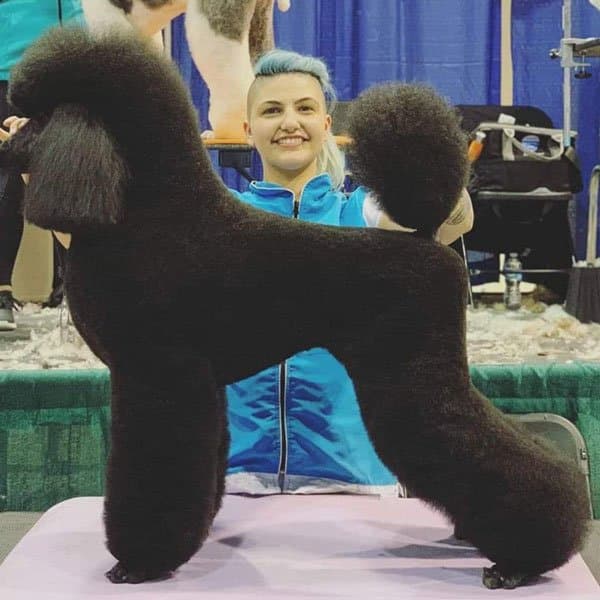
Macie also caught the competing bug from her first competition. Macie says, “I started competing to up my education and won 2nd place the first time and that set the bug. I’d been working part-time for the city shelter and competed with a Goldendoodle mix. He got adopted at that show.”
In this article, you’ll learn what goes into entering a dog grooming competition. From finding a competition and registering, to choosing a dog and understanding the judges’ expectations, there’s a lot that goes into it.
Let’s start with an overview of the preparation.
Preparation for a Dog Grooming Competition
To participate in a dog grooming competition, groomers often spent months preparing because you’ll want to practice the cut and style you intend to compete with on your chosen dog before the event. The hair will also need time to grow back out. More on finding an appropriate dog for you in a moment.
Tammy says, “A lot of the judging is about fixing the breed standard. Does the dog have beautiful hair and bone structure? Is it well-behaved? Can it stand on a grooming table for long periods of time?”
She says that the grooming can take around 2 hours and another 30 minutes for judging. Tammy also notes how grooming competitions are divided into three levels:
- Entry level
- Intermediate
- Open – the most advanced
Tammy says, “You can start off in Open level if you want. If you’re a breeder or you finish show dogs. There are certain requirements. But most start at the entry level.”
Newer dog groomers will typically start at the entry-level and work their way up.
6 Questions First Time Competing Dog Groomers Have
If you’re considering participating in dog grooming competitions, you probably have many questions. Many first-time competing groomers ask what type of dog they should start with and what the judge is looking for. Here are some suggestions for you.
1. What kind of dog should you start with?
As mentioned above, the best competition dog is one you’ve practiced with. The dog needs to have a good coat and be grown out enough at the competition that it’s obvious to the judges that you groomed the dog. One of the criteria is the presence of change. They’ll assess how much hair you took off the dog.
You’ll also want to consider the type of competition you’re entering– a salon free style class for mixed breeds for example is more of a creative class which can be good for beginners. In it, the judging is more geared toward your creativity than to breed standards.
Any competition dog needs to be well-behaved and able to stand on the grooming table for long periods. The dog also needs to be easy to transport because competitions take place all over the country and there’s a lot of travel involved.
2. Where do you get a dog?
Some groomers use their own dogs while others borrow or even rent dogs. Tammy says a client may be open to letting you use their dog. While Macie says she got started with shelter pups. She was already volunteering her grooming skills at an area shelter and found one that had the right disposition. That Goldendoodle mix not only helped her win 2nd place in her first competition but also found him a new home.
Both recommend going to dog shows and meeting breeders. According to Tammy, “There are a lot of ways to network and find good dogs. I’ve borrowed client’s dogs offering them free bathing and grooming in exchange. I’ve borrowed a show dog and even borrowed from other competitors. You build relationships with other groomers.
Tammy also says it’s important to prepare for surprises. She says, “Suddenly, a dog sprouts an allergy and the day before you’ll be looking for a dog to groom.”
3. What kind of job should you start with?
Tammy recommends creative classes like a freestyle class for beginners. “It’s more of a creative class and you’re not judged against a breed standard.”
And alternative would be focusing on a specialty like hand stripping.
4. How much does it cost to enter these shows?
Each show is a little different. There are 5-6 show promoters that produce them, and the rules are a little different for each one. Barkleigh Productions for example is well-known competition producer with shows like Intergroom and Groom Expo. Besides registration fees, there are travel costs and entry fees.
Once you have some experience, it’s possible to find sponsors to defray some of the costs.
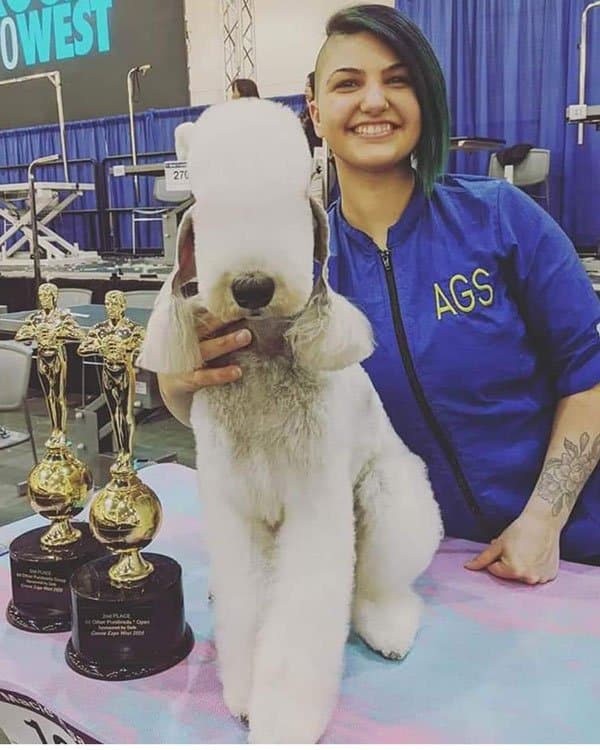
5. How do you sign up?
Macie says, “Sometimes, it’s more stressful to sign up than the compete these days. Before, I could sign up 2-3 weeks beforehand. Now, it’s 2-3 months beforehand and they can be sold out within 10 minutes. More people are interested and we need more shows so more people can compete.”
6. What is the judge looking for?
Tammy is a competition judge and says, “For salon freestyle, the judge will look at your technical work, your beginning and ending. So how much did you take off the dog? How’s your scissor work? What’s the profile and balance look like? For example, does the front of the dog match the back of the dog?”
Every judge looks for something different. Tammy says, “When I competed, I kept a log of who the judge was and their critique. If they said, “I really liked what you did. I had you at 4th place. If you just changed x, I’d have given you higher marks.”
By keeping a log, Tammy knew what to change when she went back under the same judge a few months later. “There’s a lot of personal preference among judges. It can be subjective. We have the AKC breed standard, but perception is different. My advice to beginners is to stay in the ring for the critique. That’s how you learn. Sometimes, I’ll invite them back to the Andis booth and give a few pointers.”
If you’ve ever participated in a competitive sport, you know there’s a structure behind them. It’s the same within dog grooming.
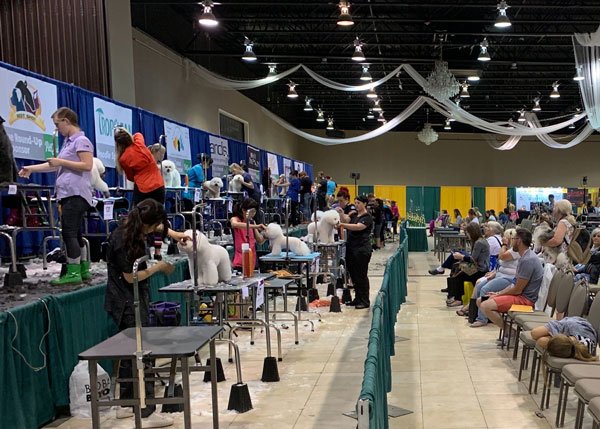
The Structure of the Competitions
You might be wondering what you can expect when you start out at entry-level. How long might it take for you to reach the advanced dog grooming levels?
As you can imagine, it’s different for everyone based on your skills and background. Yet, it’s based on a point structure. At the end of the years, you have to be in the top five in total points to advance to the next level.
Macie says, “Last year, I went to 14 shows in order to get enough points. It can take years to get to the highest level.”
While dog groomers love winning, the real winning is in the learning. Advancing your skillset and developing a supportive community of other groomers. Macie says, “I grew up in the industry since my mother was a groomer. But she always kept to herself so I never really experienced how close the groomers can get. You’re learning together and competing against one another. Just being able to push one another is something I’d never experienced before. But you really do find your group that you work with and push each other along. It’s nice to have someone to lean on.”
Check out our interview with award winning groom competitor and business owner of ‘Best in Show’ Michelle Breen talks about how she first got into the world of competitive grooming.
Are You Interested in Learning More About Dog Grooming Competitions?
As you’ve seen, grooming competitions are great resources for continuing your education as well as developing friendships with those who share your passion. You can find out more information about competitions by asking in online grooming groups, attending trade shows, and reading publications like Groomer to Groomer.
Dog grooming competitions are a highly rewarding way to develop your craft. At Daysmart Pet Software, we’re committed to helping dog groomers grow.

